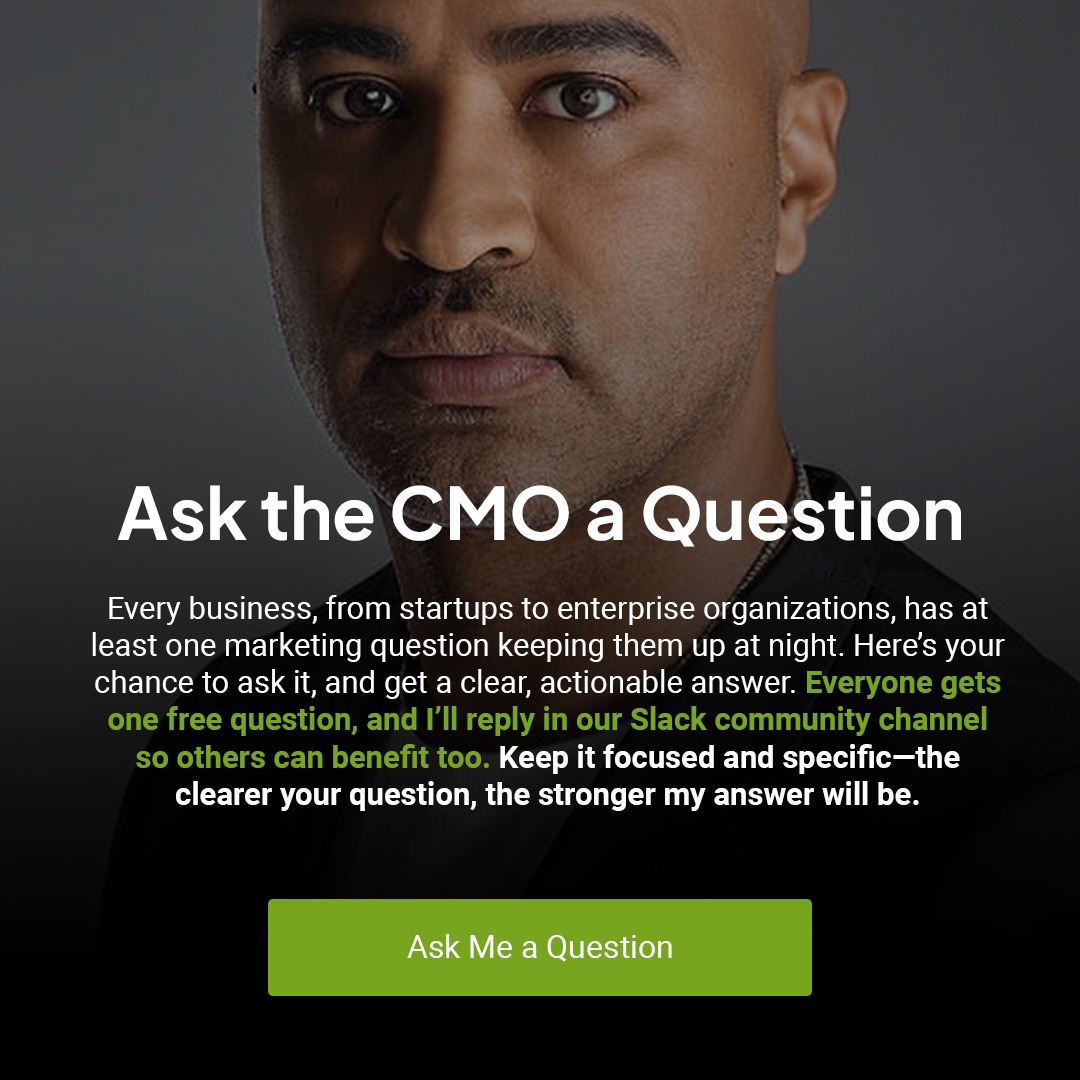Every fall, as Q4 begins, companies confront one of the most crucial exercises of the year: preparing for action in Q1. Budgets are being finalized, headcount requests are debated, and the marketing team is asked to show how it will translate ambition into impact. It’s a moment that should produce clarity and alignment. Instead, too many organizations fall back on a familiar crutch: the bloated slide deck.
By late October, teams are racing to assemble their “plan.” The result? Seventy slides. Dozens of charts. Fonts colliding with each other. It looks thorough, but it rarely answers the only question the CEO cares about: what are we actually doing when the calendar turns?
The point of Q4 planning is not to prove you’ve done the work. It’s to create a decision-ready strategy that equips the company to move with precision as Q1 begins. When the plan is a performance rather than a playbook, January becomes chaos — a sprint with no lane markers.
Why Volume Masquerades as Value
Why does this happen? Because companies confuse documentation with decision-making. An extended deck feels safe. It signals rigor, even when it conceals indecision. Teams overcompensate, cramming in every possible market data point, every conceivable initiative, and every chart that might insulate them from criticism.
It’s also political. Executives often equate volume with effort, so teams produce bulk to demonstrate seriousness. Ironically, the more content gets added, the less anyone understands the real direction. By November, leadership isn’t reviewing strategy; it’s reviewing formatting.
And by the time Q1 begins, the lack of clarity shows. Goals splinter. Priorities shift weekly. Teams keep executing the slides instead of the strategy — and then wonder why outcomes lag.
The Difference Between Decoration and Direction
Deliverables such as charts, funnel diagnostics, and budget models are valuable tools. But they are not strategy. Strategy is the set of choices about where to play and how to win. It’s not the act of documenting everything; it’s the discipline of deciding what matters most and having the courage to name it.
When Q4 planning produces a giant deck with no throughline, it’s not rigor — it’s avoidance. Avoidance of risk, avoidance of prioritization, avoidance of clarity. True strategy demands subtraction. It forces the team to collapse the noise into a handful of decisive moves that will actually shape Q1 outcomes.
What Q4 Planning Should Really Produce
The goal of this season is not a deck; it’s a single-page plan that equips leadership to say yes or no quickly and equips the team to start executing the moment January hits. At its essence, that plan must establish context, position, audience, story, channel, and conditions for success.
It should begin with a sober look at the market: what signals and risks are shaping the next quarter? It should then assess the company’s current state: where is the funnel strong, and where are the leaks that must be patched before new dollars are wasted? Next comes clarity about the audience: which segments and which customer jobs are being targeted, and which are not?
From there, the plan must sharpen the company’s voice: what’s the point of view that will break through noise, and what proof supports it? Only then does channel selection come into play — not as a laundry list of tactics, but as a deliberate choice of where to place bets and what those bets will cost. Finally, the plan must clearly outline what must be true for success, including dependencies, risks, ownership, and deadlines.
These six elements don’t live on six slides scattered across a deck. They belong together on one page, because a strategy that can’t be distilled to a page is not yet strategy. It’s still decoration.
There’s always a question that comes up: Do I literally mean one page? The answer is no — not in the typographic sense. What I mean is discipline. The one-page framework is a forcing function, a constraint that prevents teams from drifting into the safety of detail. Whether your plan is a crisp single page or a few tightly written pages isn’t the point. The point is that if you can’t communicate the strategy clearly and concisely — in a way a CEO can repeat to the board without flipping through slides — then it isn’t ready.
The Role of AI (and Its Limits)
In 2025, no planning conversation can ignore AI. Yes, AI can help. It can ingest inputs, summarize findings, and stress-test scenarios against market conditions. It can accelerate the prep work of Q4 so teams spend more time deciding and less time formatting.
But AI cannot choose. It cannot declare which market signal matters most, which audience to prioritize, or which risk is acceptable. Those are human judgments, tied to company values, investor expectations, and leadership courage. AI is a tool, not a decider. The temptation to let it replace judgment is just another version of the slide-deck problem: outsourcing the hard part of strategy to avoid discomfort.
When Clarity Wins — and When It Doesn’t
The contrast between bloated decks and one-page clarity is stark, and you don’t need abstract anecdotes to see it. Companies that walk into Q1 with a 90-slide “plan” inevitably spend their first quarter re-translating it. Every team interprets the deck differently, so priorities splinter. Marketing is running campaigns while sales insists the ICP is broader. Product is chasing features no one agreed to fund. By February, the entire leadership team is back in meetings debating what the “real plan” was supposed to be. Execution dies in the fog.
By contrast, organizations that enforce discipline in Q4 make speed their competitive advantage. When every initiative is pinned to a single-page framework, ambiguity disappears. There is no debate over who owns what, which bets are being made, or how results will be judged. That clarity feels uncomfortable in the boardroom — executives complain it’s “too simple” — but in January, it proves its worth. Teams execute without hesitation because there’s no translation layer. The page is the plan.
The lesson is blunt: strategy lives or dies in the discipline of Q4. Companies that mistake decks for direction spend Q1 spinning their wheels. Companies that embrace clarity hit the ground running. The difference isn’t intelligence or talent. It’s the willingness to make choices when it’s uncomfortable.
For CEOs: What to Demand Now
If you’re a CEO in October or November, don’t settle for theater. When your team brings you a plan, insist on the one-page version first. If they can’t deliver it, they’re not ready. Ask yourself:
- Could you explain this plan to your board in five minutes?
- Do you know what will happen in January, who owns it, and how success will be measured?
- Do you understand what conditions must hold true for the plan to work?
If the answer is no, then you don’t yet have a strategy — you just have a document.
For CMOs: How to Resist the Slide Temptation
The pressure to perform is real. Boards expect thick decks. CEOs expect thoroughness. Teams expect a show of competence. But the true mark of competence is focus, not font selection.
As CMO, your job is not to prove you thought of everything. It’s to prove you know what matters. The one-page plan is not about minimalism for its own sake — it’s about enforcing the discipline of choice. When your team pushes for seventy slides, push back. When your CEO asks for the “real plan,” you’ll be ready.
Closing Principle: Strategy Equals Choice
At its core, strategy is not a document — it’s a decision. It is the act of choosing where to play, how to win, and what risks to take. Every Q4, companies must decide whether they’ll do the hard work of choice or hide behind volume. January will expose the answer. Teams that hid behind slides will be lost in execution. Teams that chose clarity will already be moving. As Q4 unfolds, remember: if your marketing plan can’t fit on a single page, it isn’t a strategy. It’s just theater. And theater won’t win you Q1.
Keep Reading
Want more? Here are some other blog posts you might be interested in.
He looked across the conference room table at me and said, almost in a whisper, “I hate to be the bad ...
There is a scene that repeats itself in a lot of young companies. It is Monday morning, the leadership team is ...
If a society loses the ability to sit with its own thoughts, has something rotten taken hold at the core, or ...
For founders and growing companies
Get all the tips, stories and resources you didn’t know you needed – straight to your email!




